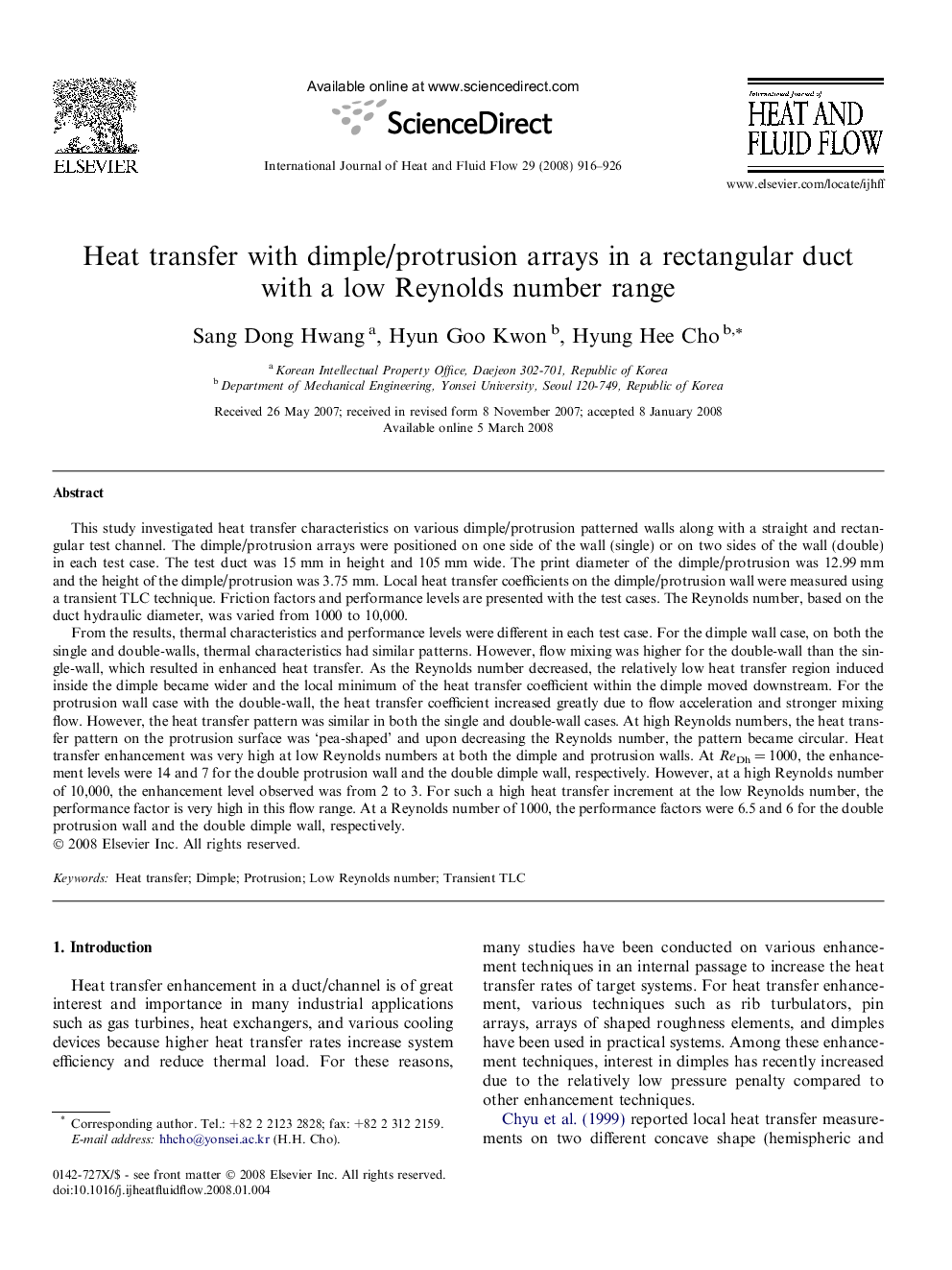| کد مقاله | کد نشریه | سال انتشار | مقاله انگلیسی | نسخه تمام متن |
|---|---|---|---|---|
| 655831 | 1457669 | 2008 | 11 صفحه PDF | دانلود رایگان |

This study investigated heat transfer characteristics on various dimple/protrusion patterned walls along with a straight and rectangular test channel. The dimple/protrusion arrays were positioned on one side of the wall (single) or on two sides of the wall (double) in each test case. The test duct was 15 mm in height and 105 mm wide. The print diameter of the dimple/protrusion was 12.99 mm and the height of the dimple/protrusion was 3.75 mm. Local heat transfer coefficients on the dimple/protrusion wall were measured using a transient TLC technique. Friction factors and performance levels are presented with the test cases. The Reynolds number, based on the duct hydraulic diameter, was varied from 1000 to 10,000.From the results, thermal characteristics and performance levels were different in each test case. For the dimple wall case, on both the single and double-walls, thermal characteristics had similar patterns. However, flow mixing was higher for the double-wall than the single-wall, which resulted in enhanced heat transfer. As the Reynolds number decreased, the relatively low heat transfer region induced inside the dimple became wider and the local minimum of the heat transfer coefficient within the dimple moved downstream. For the protrusion wall case with the double-wall, the heat transfer coefficient increased greatly due to flow acceleration and stronger mixing flow. However, the heat transfer pattern was similar in both the single and double-wall cases. At high Reynolds numbers, the heat transfer pattern on the protrusion surface was ‘pea-shaped’ and upon decreasing the Reynolds number, the pattern became circular. Heat transfer enhancement was very high at low Reynolds numbers at both the dimple and protrusion walls. At ReDh = 1000, the enhancement levels were 14 and 7 for the double protrusion wall and the double dimple wall, respectively. However, at a high Reynolds number of 10,000, the enhancement level observed was from 2 to 3. For such a high heat transfer increment at the low Reynolds number, the performance factor is very high in this flow range. At a Reynolds number of 1000, the performance factors were 6.5 and 6 for the double protrusion wall and the double dimple wall, respectively.
Journal: International Journal of Heat and Fluid Flow - Volume 29, Issue 4, August 2008, Pages 916–926